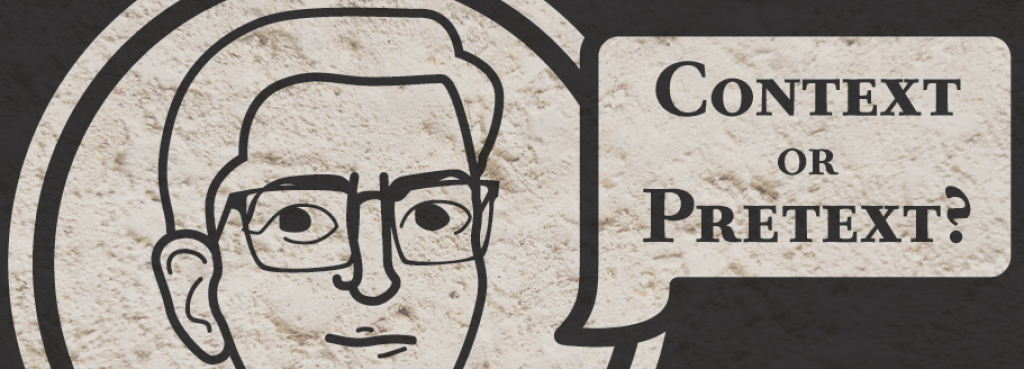Christians enter a mindset of interpretation of Scripture that poses significant threats to the intentioned meaning. Searching through the Old Testament, believers look to the New Testament with the sole intention of directly connecting Christ to any passage they deem necessary. Without the New Testament backing of theology gained through those types of interpretations, common followers of Christ desperately place his biblical presence into the Old Testament based on intellectual allegories that stretch farther than the east is from the west.
The exact terms for what I refer to are typology or allegorical interpretation. Typology is the study of types, meaning symbols. An example of typology would be in Romans 5:12-21 when Paul directly contrasts Christ to Adam — Adam being the introduction of death while Christ the introduction of life.
Allegorical interpretation acts as the application between Scripture and real life. An example of this interpretation would be when someone argues that the David and Goliath story implies the believer needs to fight his giants. Conversely, the real meaning of 1 Samuel 17 adds to God’s glory and shows his power and protection over Israel and all other nations.
Not all allegorical interpretation lies completely incorrect. However, ever since the Reformation in the 1500s, pastors and preachers increased their use of the tool, leading to unguided interpretations of Scripture, in most cases the Old Testament. For example, some stretch Genesis 1:16 to mean Christ is the greater light while the church is the lesser light. It’s the Creation account, not a gospel presentation.
I remember when I first began to study through Scripture. I communicated a passage I gained interest in to a friend of mine I looked up to. After talking to him about everything I learned from my reading, he asked, “Where’s the connection to Jesus?” I asked him to clarify. He said that anything studied should be connected back to Christ. He wanted me to make a direct connection between the Old Testament passage I read to Jesus Christ.

I believed him and then pursued this type of thinking. After a while, I realized the stretches I was making in my studying. A couple that stand out in my mind stem from passages like Joshua 6 and the building of the tabernacle in Exodus.
Israel destroys Jericho in Joshua 6. Israel granted Rahab salvation from destruction because she was faithful. Rahab showed her faithfulness by tying a “scarlet rope” outside her window to act as a sign for the Israeli spies. Attempting to directly connect this to Christ, I created the reasoning that the scarlet rope acted as a symbol of Christ’s scarlet blood on the cross, which gives salvation just as the scarlet rope gave salvation to Rahab. The only issue with this reasoning is there are no other Scriptures that point to it. Nothing backs up the connection. Perhaps the purpose of Scripture clarifying the color of the rope in Exodus 35:18 was to simply add description. Asking for a specific color of rope would logically add to the faithfulness shown by Rahab. A direct connection to Christ is not meant to be made.
However, an indirect connection should be made. First, the passage shows God’s faithfulness and power. Second, it shows Rahab’s faithfulness, which is commended in Hebrews 11. Third, it shows Israel’s faithfulness in its tearing down the walls of Jericho. All these indirectly connect to Christ. No theological stretches are made, and no Scripture is assumed or taken out of context.
The building of the tabernacle in Exodus also proved a challenge. For some reason, in my desperate belief of directly placing Christ in the text, the tent pegs seemed to require a connection to Christ. After research, I reasoned that the pegs to the tabernacle tent were placed halfway out of the ground and halfway in to show the equal importance of both Christ’s death and resurrection. His death and resurrection are certainly equal in importance, but the pegs to the tabernacle certainly don’t point to those concepts. Maybe the pegs are meant to point to the tent’s need of being tied to something in the ground.
Fortunately, I know of multiple pastors who avoid overusing allegorical interpretation and abusing Scripture. My desire is that this type of interpretation only comes to the table when Scripture directly calls for it. Take Scripture as it’s intended. If historical, study the history for the sake of understanding and eventual application. Never take a text and search for an application immediately. Understand, then apply. If I had just studied the context of Joshua 6, I would have realized how much of a dangerous stretch I attempted to make.
Duvall is the opinion editor for the Liberty Champion. Follow him on Twitter

